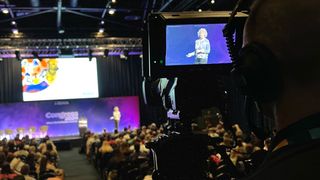Illuminating the Impact of Illumination Techniques on the Art of Film Projection Mapping Techniques
Illuminating the Impact of Illumination Techniques on the Art of Film Projection Mapping Techniques
Blog Article
Video mapping projection is an exciting creative form that merges technology and innovation to transform common surfaces into extraordinary sight displays. This technique involves projecting images and videos onto 3D elements, such as structures, sculptures, or platforms. One of the most crucial factors in producing effective projection is the use of efficient lighting methods. Proper lighting improves the aesthetic elements of the display and ensures that the visuals are crisp and engaging. This piece explores the influence of lighting methods on video mapping and how they can elevate the overall experience.
Illumination plays a crucial role in video projection because it establishes the atmosphere and feel of the exhibit. Different illumination techniques can evoke various emotions and reactions from the audience. For example, using gentle, cozy illumination can create a welcoming environment, while bright, cool illumination may produce a more dynamic or intense effect. By carefully selecting light colors and brightness, artists can manipulate how viewers perceive the displayed images, leading to a more immersive encounter. The equilibrium between mapping luminance and surrounding light is essential, as it can significantly affect the visibility and impact of the images.
In addition to, color and intensity, the direction of light also influences the effectiveness of projection. Lighting from different directions can generate contrast and accents that add depth to the projected images. This technique, known as light and shadow, can enhance the three-dimensionality of the objects being projected. Additionally, using moving original site lights can add dynamism to the display, making the experience more engaging for the audience. When the light interacts with the projected visuals, it can create an illusion of movement and change, grabbing the audience's focus.
Another important element of illumination in projection is the use of unique effects. Methods such as patterned illumination, which employs shapes and forms to project light, can introduce depth and complexity to the projections. This method allows artists to layer visuals and create visually stunning results that enhance the mapping. Additionally, incorporating laser lights or light-emitting diode illumination can further enhance the display, offering a unique blend of sight components that attract the viewers in. These unique effects, when used thoughtfully, can elevate the mapping beyond a simple display to an immersive work of creativity.
In summary, the influence of illumination methods on video projection is profound. By understanding how various illumination elements interact with projected images, creators can produce enthralling experiences that resonate with viewers. The thoughtful choosing of hue, intensity, direction, and special effects allows browse around here for a vivid tapestry of visual storytelling. As technology continues to grow, the possibilities for artistic showcasing in mapping will only grow, making lighting an ever-important component in this progressive creative form.